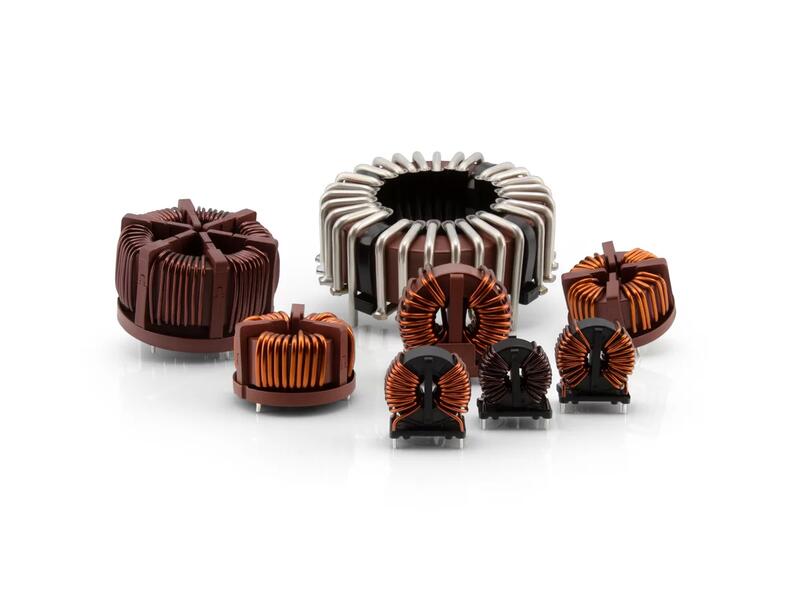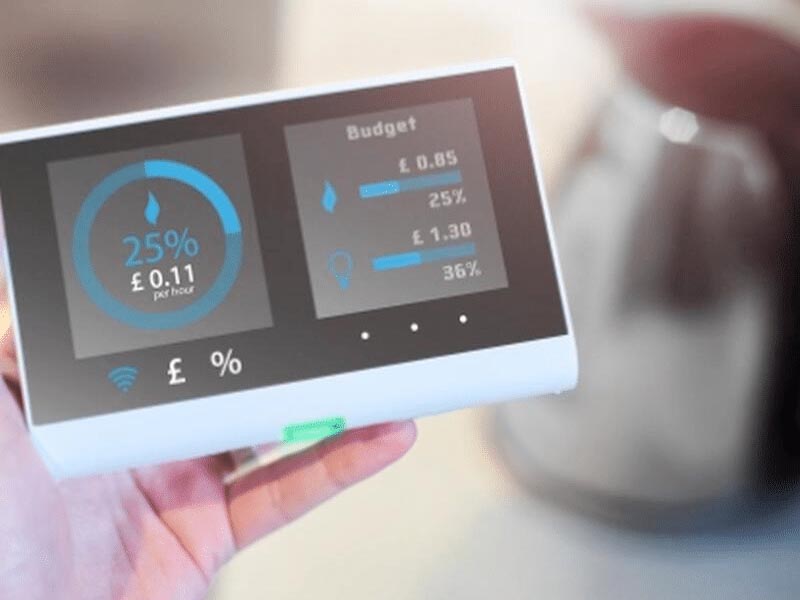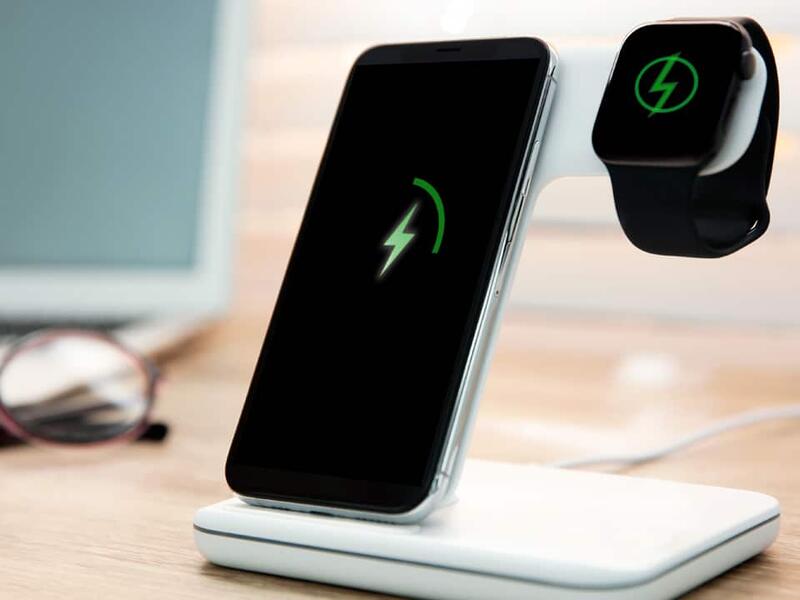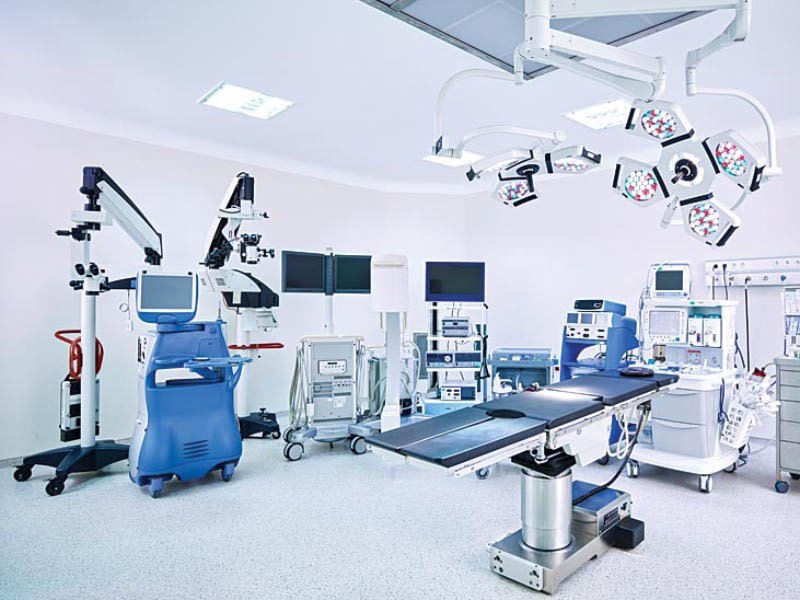-
 Common Mode Chokes (CMC)
Common Mode Chokes (CMC)
How Common Mode Chokes (CMC) Work Let's study the function and operation of common mode chokes and how to reduce unnecessary interference. Differential interference First, we study differential interference. For differential interference, and for any signal transmitted from the line side, there should be equal returns on the neutral side. Anything that passes through the neutral point (bottom surface) from the line (or top surface) should be crossed off. But the reality is that if there is equal signal cancellation, you won't get any unnecessary noise in differential mode. Differential noise occurs when these types of transmissions are unbalanced and cancelled. Common mode noise In the case of common mode noise, noise enters and releases simultaneously from the two input sides (line and neutral), but it also couples back to the ground. All that needs to be done is to capture harmful noise and prevent it from spreading back to the ground. Therefore, it is necessary to capture the line current and the neutral signal current at the same time, and consume them through general-purpose devices such as amorphous magnetic cores and nanocrystalline magnetic cores. The common mode choke coil is to wind the line and neutral windings on an amorphous or nanocrystalline iron core. When a current-compensated choke is used to reduce common mode noise (interference mode or harmful noise), it has high impedance at harmful frequencies to eliminate the harmful noise. As shown in the picture, the blue line is common mode rejection. The red dashed line at the bottom is differential mode suppression. Even if it is a common mode choke coil, it will have a certain differential mode rejection at different frequencies. Consider the transmission of useful data carriers (also called "signals") at a certain frequency. Now, if there is noise near this frequency, the noise (unwanted frequency) must be eliminated without distorting the signal. Normally, noise is common mode noise. If it cannot be eliminated, the solution to reduce unwanted noise frequencies is to use common mode chokes with high impedance, such as iron cores made of iron-based amorphous and nanocrystalline materials. Using appropriate common mode chokes can reduce noise without affecting the desired signal. Common Mode Choke VS Single Choke Sometimes common mode impedance is required, but differential mode impedance is very small. By looking at the comparison of various parts between common mode chokes, there is a considerable difference between a single choke for differential mode suppression and current compensation (or common mode choke) for common mode suppression. The main difference between these two parts is that in a common mode choke, there are two windings or more windings, so three-wire windings or more windings can be used. There are even four carriers, but all windings are located on a common magnetic core. On common mode chokes, an amorphous or nanocrystalline iron core holds the windings together....
Read More
-
 SENSOR
SENSOR
The Application of Amorphous Alloy in Sensor Field Amorphous soft magnetic material can reduce energy consumption, minimize the noise of electronic circuits of electrical products, and are also environmentally friendly products. Ordinary alloys have a regular metal crystal structure, while the atoms of amorphous alloys are randomly distributed. Due to this random distribution of atoms, the magnetic properties of amorphous alloys are anisotropic. In addition, the increase in resistivity, the amorphous thin ribbon significantly reduces the eddy current loss, so the magnetic properties are significantly improved. In SAT, we have manufactured iron-based amorphous alloys through a liquid rapid cooling method. This method of rapid cooling at a rate of about one million degrees per second can prevent the metal from solidifying into an amorphous structure instead of a normal ordered crystal structure. Due to the advantages of amorphous structure, amorphous alloy has become a choice for soft electronic products (stretchable and wearable electronic products). In particular, Fe based alloys have been studied in many fields due to their high electrical conductivity and excellent combination with other materials. An electronic skin (e-skin) is a combination of sensors that sense various stimuli. Although electronic skins that mimic various structures and sensations in nature (including those in the human body) are being studied, it is still a challenge to develop electronic skins with high durability and various detection equipment. Human body attachable devices will inevitably require flexible sensors. Flexible electronic skins can be used in the fields of healthcare and humanoid robots. The realization of such devices requires a high performance, high reliability, and health monitoring system that can be connected to the human body. Therefore, a high-performance, multi-functional (pressure, temperature, optical sensor and heater) device made of amorphous alloy, the device is suitable for maintaining integrity even under external types of forces (such as stretching and bending). The wearable electronic device is the best choice. Because the iron-based amorphous alloy has excellent mechanical properties and retains certain electrical properties under physical stimulation such as bending or stretching, on the flexible substrate, the resistance change pressure sensor, temperature sensor and photoelectric sensor of amorphous metal. It can be used to check the health of the user, thus ensuring the feasibility of the electronic skin. At the same time, a micro heater can be used to inject appropriate medicine. The electronic skin integrates multifunctional sensors with excellent performance and can be used in a variety of applications, such as human-computer interaction interfaces, healthcare monitoring systems, and even medical diagnostic equipment. Click here for more applications of amorphous material.
Read More
-
 SOLAR & WIND ENERGY
SOLAR & WIND ENERGY
The Advantages of Amorphous Applications in Solar & Wind Energy Industry In the digital age, most companies have been looking for ways to increase the value of their products, thereby bringing a better customer experience and making business cooperation more meaningful. When grid power cannot be used, no matter what the actual conditions, power products must be able to operate independently and day after day. When researching renewable solutions for electricity, solar energy is the first choice. The solar energy market is highly competitive, and a few simple searches can reveal thousands of different solutions. Considering the reality, these standardized solutions rarely meet the specific needs of enterprises. Shenzhen Amorphous Technology is not limited to the manufacturing of amorphous products and a single amorphous technology provider. We provide solutions for various amorphous materials and energy conversion problems. We are committed to improving energy conversion efficiency by choosing the most suitable solution for clients, using amorphous materials, and providing customized energy solutions to create the best customer experience. BENEFITS OF AMORPHOUS CORES 0. High Permeability and Hardness 1. Higher Corrosion and Scratch Resistance than Silicon Steel 2. Lower Coefficient of Friction than Ferrite 3. Excellent Hardness at A Range Temperatures 4. Higher Yield Strength than Silicon Steel 5. Easy to Winding 6. A Range of Thickness 7. Excellent Thermal Conductivity Click here for more applications of amorphous material.
Read More
-
 SMART METERS
SMART METERS
The Application of Nanocrystalline and Amorphous Alloys in Smart Meters Current transformer sensors, loaded by a precision resistor, are widely spread in electric energy metering devices. The core of such appliance is made from iron-based materials. So it comes in the magnetic saturation when a constant component of current is present or when current overloads occur, which affects the accuracy of energy accounting. Additionally, there is a possibility of electric energy meter readings distortion due to the impact of external magnetic field on transformer sensors. Nanocrystalline and amorphous alloys could help to neutralize these negative influences. Iron-based amorphous alloys are characterized by high magnetic induction of saturation (Bs 1,5-1,6 T) and low losses on alternating magnetization in conventional and high frequencies. Measurement errors of transformer-based current sensors are determined by the limited magnetic perme-ability of a magnetic core and non-zero value of the load resistance.The error of the current transformer decreases with the magnetic resistance of the magnetic circuit reduction. I.e. the more the magnetic permeability of the material, the more the cross section of the core and the less its length and also the less its secondary load (ideal case –a short circuit mode), the smaller the error. Magnetic permeability depends on the magnetic field intensity and is almost constant only in the weak fields region. Since transformers operate in weak fields, it is necessary to use materials with high initial magnetic permeability. Such properties are peculiar for modern nanocrystalline and amorphous alloys. Their advantage is the narrow hysteresis loop, which reduces the magnet-ic saturation of the core CT. Physico-chemical properties of modern nanocrystalline and amorphous materials help to improve the accuracy of electric energy meters and minimize the possibility of their readings corruption through external magnetic fields using.
Read More
-
 EAS TAG
EAS TAG
The Application of Amorphous Slices in EAS Tag Electronic article surveillance is a technological method for preventing shoplifting from retail stores, pilferage of books from libraries or removal of properties from office buildings. Special tags are fixed to merchandise or books. These tags are removed or deactivated by the clerks when the item is properly bought or checked out. At the exits of the store, a detection system sounds an alarm or otherwise alerts the staff when it senses active tags. Some stores also have detection systems at the entrance to the restrooms that sound an alarm if someone tries to take unpaid merchandise with them into the restroom. These tags are made of a strip of amorphous metal which has a very low magnetic saturation value. Except for permanent tags, this strip is also lined with a strip of ferromagnetic material with a moderate coercive field (magnetic "hardness"). Detection is achieved by sensing harmonics and sum or difference signals generated by the non-linear magnetic response of the material under a mixture of low-frequency (in the 10 Hz to 1000 Hz range) magnetic fields. When the ferromagnetic material is magnetized, it biases the amorphous metal strip into saturation, where it no longer produces harmonics. Deactivation of these tags is therefore done with magnetization. Activation requires demagnetization. The EM systems are suitable for libraries to protect books and media. In the retail segment, unlike AM and RF, EM can protect small or round items and products with foil packaging or metal objects, like cosmetics, baby milk cans, medicines, DIY tools, homeware etc. EM systems can also detect objects placed in foil bags or in metal briefcases. A further application is the Intellectual property (IP) protection against theft: Security paper with embedded microwires, which is used to detect confidential documents if they are removed from a building.
Read More
-
 WIRELESS CHARGE
WIRELESS CHARGE
The Amorphous and Nanocrystalline Material Application in Wireless Charge Industry Nearly a half dozen wireless charging technologies in use today, all aimed at cutting charge cables to electronic devices from cellphones and laptops to kitchen and car applications. Wireless charging is bringing a revolution to the medical device, electric vehicle and smart manufacturing industries because it brings the promise of increased mobility and advances that could allow tiny IoT devices to get power feet away from traditional chargers. The most popular wireless technologies now in use rely on a piece of amorphous material between a two copper coils, which limits the distance greatly between a device and a charging pad. How Wireless Charging Works Three types of wireless charging are common, these charging pads that use tightly-coupled electromagnetic inductive, amorphous material is the suitable one, or non-radiative charging; charging-through-surface type chargers that use loosely-coupled or radiative amorphous material resonant charging that can transmit a charge a few centimeters; and uncoupled RF wireless charging that allows a trickle charging capability at distances of many feet. Both tightly and loosely-coupled resonant charging operate on the same principle of physics: a time-varying magnetic field made of amorphous or nanocrystalline material induces a current in a closed loop of wire. An amorphous or nanocrystalline material antenna (copper coil) is used to create a strong magnetic field, which can create a current in one or more receiver antennas. At the same frequency, the amount of induced current in the receivers increases, enables power transmission at further distances between transmitter and receiver and increases efficiency. Bigger coil size or the increasing coil number can greater the charging distance. In the case of the copper coils are only a few inches in diameter of smartphone wireless charging pads, amorphous and nanocrystalline material can larger the distance over which power can travel efficiently. When the coils are larger, more energy can be transferred wirelessly. SAT Amorphous can reach the goal, a company formed from China 13 years ago, has solved the problem. It’s amorphous and nanocrystalline material pieces for wireless charging technology for everything from smart phones and PV inverters to smart manufacturing. Future Wireless Technology Wireless power is increasing interest in beaming power through free space, 60 W of power over a 2-meter distance using strongly coupled resonant devices. The left power source is connected to AC power. The blue lines represent the magnetic near field induced by the power source. The yellow lines represent the flow of energy from the source to the capture coil, which is shown powering a light bulb. This also shows how the magnetic field (blue lines) can wrap around a conductive obstacle between the power source and the capture device. SAT Amorphous, a global developer and manufacturer ...
Read More
-
 MEDICAL DEVICE
MEDICAL DEVICE
The Application of Amorphous Block in Biotech and Medical Device Field Amorphous alloys block is widely used in the biomedical field, from orthopedics and cardiovascular to dental implants and fillings. Specifically, for example, non-biodegradable Ti-based, Zr-based and Fe-based amorphous alloys have excellent mechanical properties and good corrosion resistance, and can be used as biomedical equipment (such as scalpels, Pacemakers, medical staplers and minimally invasive surgical equipment) and biomedical implants (for example: forming joint curved surfaces, artificial prostheses, dental implants, which must work for a long time in a severe human body). On the other hand, biodegradable bulk amorphous alloys (including Mg-based, Ca-based, Zn-based and Sr-based amorphous alloys) have great potential as fracture repair materials (for example: intramedullary nails, bone plates and bone Screws) can also become cardiovascular stents, absorbent sutures, fillings around teeth, and bone fillings after tumors and cysts in joints are removed; as their temporary mission is completed, they are gradually degraded in the human body. During this time, blood vessels and bones are remodeled and healed. Amorphous alloys for biomedicine have the combined properties of bioglass and biometal, and exhibit high strength and low modulus of elasticity, making them ideally suitable for biomedical applications in theory. In particular, the elastic limit of amorphous alloys for biomedicine is 2%, which is extremely high compared to the elastic limit of bones (1%), which is comparable to that of bones. This shows that amorphous alloys for biomedicine have unique elastic bending and bones. The natural bending of the amorphous alloy will cause the amorphous alloy to have a more uniform stress distribution than the existing materials, reduce stress concentration and reduce the stress shielding effect, so as to achieve faster recovery and healing of patients. Due to the unique properties of amorphous alloys for biomedical applications, amorphous alloy bone screws can use thinner screw shafts and deeper threads, thereby providing greater bonding force between bad bones. Compared with the traditional 316L stainless steel phase stent, the amorphous alloy stent only needs 1/3 of its cross-sectional pillar and has more than 5 times the deflection. In the past few decades, some special amorphous alloys for biomedical purposes have been developed, and in vitro and in vivo tests and feasibility evaluations have been done as biomaterials. In the past decade, many biomedical implants and devices using amorphous alloys as raw materials have been designed and developed. The biggest advantages of amorphous alloys: 1) More excellent casting surface quality; 2) The position and size between the containers are more accurate; 3) The difference between product batches is only limited by the changes before and after the mold cavity. In addition to the biomedical devices mentioned above, bulk amorph...
Read More
-
 UNDERFLOOR HEATING
UNDERFLOOR HEATING
Outdoor Application of Amorphous Alloy Ribbon Geothermal System The homogeneous, non-boundary structure of amorphous metal alloys provides unique mechanical, corrosion resistance, wear resistance and electromagnetic properties, making amorphous metal alloys more superior than conventional crystalline metals in many aspects and more room for performance expansion. When energized, the amorphous alloy ribbon will generate far-infrared radiant heat, which is the most ideal heating element for geothermal systems. Compared with the surface area of traditional heating cables, the surface area of the amorphous ribbon is larger, and it can efficiently transfer heat to the surrounding environment when its own temperature is low. In a home heating environment, lower heating element temperature means a healthier environment and higher safety and durability. The outdoor working temperature of the amorphous alloy strip is about 70°C, which can generate the required heat energy (up to 62 watts/m) according to the demand. It is suitable for working in any scene and is suitable for various sports facilities (soccer field, rugby field, golf Stadiums, tennis courts, etc.), roads, bridges, airport runways, parking ramps, and short-lane snow melting and deicing ideal tools. It is an ideal method for agricultural greenhouse heating and soil heating, which is conducive to better crop growth. Outdoor heating system Amorphous alloy strip snow and ice melting system is an ideal solution for external concrete, asphalt, paving stones, gravel, lawns, grasslands (sports fields), etc. Heating element performance The heating element is used for a fixed voltage. Both high and low voltage, AC and DC are available. Geometric size The heating pad is designed to cover 20% of the nominal heating area, usually from 15% to 30% of the area coverage is possible. Electrical indicators The normal output power of each heating pad is 250-400 watts/m², which is specified on the label of each heating pad. Advantages in outdoor applications Reach working temperature quickly The heating zone has a large heat transfer area, and the speed to reach the ideal temperature is faster than the pipeline plumbing or heating cable heating system buried deeper under the ground. It generates more uniform heat Amorphous alloy strip heating pad is composed of a wide metal strip, which can cover at least 20% of the ground area (compared to only 1% to 3% coverage of heating cables), this high coverage rate The ground surface provides uniform heat. Superior cost and more economical operation Amorphous alloy strip heating system can reduce operating time and reduce operating costs. Because the thickness of the amorphous alloy ribbon is very small (25 microns), the heating element itself does not store heat energy. The heating ribbon can convert all electrical energy into heat energy, and all heat will be dissipated to the surrounding area-this situation reduces energy consumption, The operating cost is very econom...
Read More
-
 AUTOMOTIVE ELECTRONIC
AUTOMOTIVE ELECTRONIC
Application of Amorphous and Nanocrystalline Alloys in Automobile Vehicles With the development of the automobile industry in the direction of automobile and intelligence, electric drive has become the main driving method of automobile vehicles compared with traditional mechanical drive methods. Therefore, the challenge for the development of automobile vehicles lies in the battery, electric drive and electric drive. control. In the three-electric system, a large number of magnetic materials and devices are used, such as: 1. For battery monitoring, measurement and protection in the battery management system, magnetic materials directly affect the monitoring and measurement accuracy; 2. The motor and inverter in the electric drive system, and the performance of magnetic materials directly determine the performance and efficiency of automobile vehicles; 3. In the electronic control system, the dynamic performance of magnetic materials is very important for magnetic materials and devices that require multiple functions such as filtering, energy storage, voltage transformation, and measurement. The development of automobile vehicles provides development opportunities for the development of magnetic materials and devices. In order to improve the conversion and utilization efficiency of electric energy, high energy density, high frequency and low loss can significantly improve the performance of the motor. Therefore, materials are required to have high saturation magnetic induction and low loss at high frequencies. On the other hand, the circuit design must achieve the goal of high efficiency and miniaturization, so magnetic materials are required to have excellent broadband characteristics to meet the high and low frequency requirements of electric drives; low loss to extend the cruising range; high curie temperature to improve temperature stability; common mode high impedance characteristics to meet the demanding EMC requirements of high frequency and intelligentization. Amorphous and nanocrystalline alloys are currently the most ideal soft magnetic materials for electric vehicles Amorphous and nanocrystalline materials have special structures and excellent comprehensive properties, especially in soft magnetic properties. Therefore, they are ideal materials for manufacturing high-performance inductors, filters, high-precision electromagnetic measurement and sensors, and high-performance electromagnetic shielding and absorbing equipment. Amorphous and nanocrystalline alloys are currently the most ideal materials for electric drive, electric control and charging systems which can provide for automobile vehicles: 1. Products such as high frequency filter inductors, reactors and PFC; 2. Provide EMC overall solutions for charging systems; 3. Amorphous motor is especially suitable for automobile vehicles. It has outstanding advantages such as low current start and output large torque, high-speed torque without attenuatio...
Read More
 Common Mode Chokes (CMC)
Common Mode Chokes (CMC)
 SENSOR
SENSOR
 SOLAR & WIND ENERGY
SOLAR & WIND ENERGY
 SMART METERS
SMART METERS
 EAS TAG
EAS TAG
 WIRELESS CHARGE
WIRELESS CHARGE
 MEDICAL DEVICE
MEDICAL DEVICE
 UNDERFLOOR HEATING
UNDERFLOOR HEATING
 AUTOMOTIVE ELECTRONIC
AUTOMOTIVE ELECTRONIC